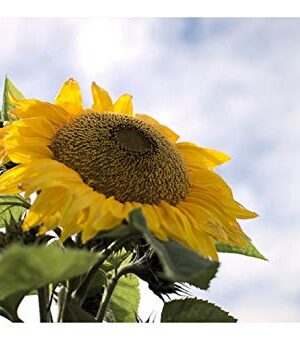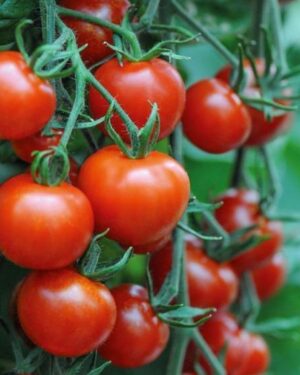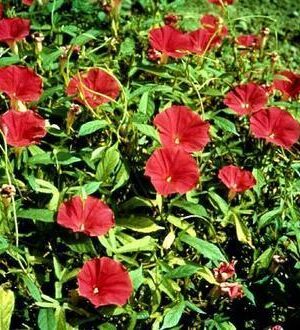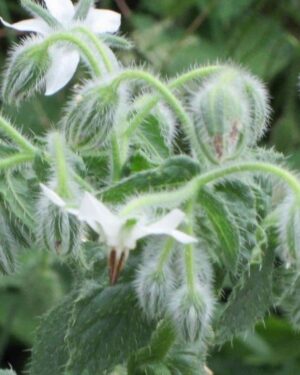Description
ORGANIC WILD FLOWER OX EYE DAISY
ORGANIC WILD FLOWER OX EYE DAISY . A familiar and attractive grassland perennial found in meadows, grass verges and railway embankments. It flourishes in well drained poor to medium rich soils. The 12—18in plants produce a single flower of white petals surrounding a yellow eye between late may and early Sep. The plant spreads via seeding producing up to 400 seeds per flower head. In dense meadows it will need other aggressive species kept in check and will benefit from scarifying on a bi-annual basis.
Cultivation Advice
- Ox-eye daisies prefer well-drained soil with good sunlight exposure. Choose a location that receives at least partial sunlight.
- Sow the seeds directly into the ground in the spring or early autumn. Make sure the soil is prepared by removing weeds and debris.
- Scatter the seeds evenly over the soil surface and lightly press them into the soil. Avoid burying the seeds too deeply; a light covering of soil or mulch is sufficient.
- Water the seeds regularly after planting to keep the soil consistently moist, especially during dry spells. Once established, ox-eye daisies are somewhat drought-tolerant but benefit from occasional watering.
- Mulch around the plants to help retain moisture, suppress weeds, and protect the roots during extreme temperatures.
- Deadhead spent flowers regularly to encourage continuous blooming and prevent self-seeding if you want to control their spread.
- Use organic fertilizers or compost to nourish the soil and provide essential nutrients. Avoid synthetic chemicals and pesticides, as ox-eye daisies generally don’t require them and can thrive without chemical intervention.
- Every few years, divide mature clumps of ox-eye daisies in the spring to rejuvenate the plants and encourage healthy growth. This can be done by carefully separating the clumps and replanting them.
- Propagate through seeds collected from existing plants or by division.
- Ox-eye daisies are generally resistant to pests and diseases. However, keep an eye out for aphids or caterpillars, which might occasionally appear. You can use organic pest control methods like insecticidal soap or neem oil if necessary.
- After the flowering season, consider cutting back the plants to encourage new growth and prevent them from becoming too leggy. Pruning can also help maintain a more compact and bushy shape.
- Planting ox-eye daisies alongside other native wildflowers or beneficial plants can create a biodiverse and attractive garden. They often complement other wildflowers like black-eyed susans, coneflowers, or asters.
- Ox-eye daisies are excellent for attracting pollinators like bees and butterflies to your garden. They provide nectar and serve as a food source for these beneficial insects, contributing to a healthy ecosystem.
- In colder climates, ox-eye daisies generally withstand winter conditions well. However, adding a layer of mulch around the base of the plants can provide additional protection during harsh winters.
- Some varieties of ox-eye daisies can grow tall and might require support to prevent them from flopping over. Consider using stakes or other supports to keep the plants upright.
- Regularly check for invasive plants or weeds that might compete with ox-eye daisies for nutrients or space. Manual removal of weeds is preferable in organic cultivation to avoid using herbicides.
- Embrace the natural and wild appearance of ox-eye daisies. They often have a charming and carefree aesthetic, which adds a delightful touch to gardens or natural landscapes.
- Check with local regulations or authorities regarding the cultivation of ox-eye daisies, as in some regions, certain wildflowers may be considered invasive or regulated due to their spreading nature.
- If you’re transplanting ox-eye daisies, ensure you do so with care, as their roots can be sensitive. Water the plants well before and after transplanting to reduce stress.
- There are various cultivars of ox-eye daisies with slightly different characteristics in terms of height, flower size, and color. Choose cultivars that best suit your garden’s conditions and aesthetic preferences.
- While ox-eye daisies can thrive in various conditions, they may benefit from occasional grooming throughout the growing season. This could involve removing damaged foliage or spent flowers to encourage new growth.
- Allow some flowers to go to seed if you want to harvest them for future planting. Let the seeds mature and dry on the plant before collecting them for storage and sowing.
- Consider sourcing seeds or plants from local nurseries or native plant suppliers. Locally adapted varieties tend to be better suited to the specific environmental conditions of your area.
- Take note of the wildlife that interacts with ox-eye daisies in your garden. Observing these interactions can offer insight into the health of your garden’s ecosystem.
- Growing ox-eye daisies can also be an educational opportunity for children or community initiatives. They’re great for teaching about native plants, pollinators, and the importance of biodiversity.









Reviews
There are no reviews yet.